📞+86 153 7530 2641 📧 hongjing.Wang@feichuncables.com

VDE 0250 High-Speed R-(N)TSCGEWOEU Reeling Cable – Enhanced Version for Stackers, Reclaimers, and Ship Unloaders
Discover the upgraded Type R-(N)TSCGEWOEU High-Speed Reeling Cable, specially engineered for stackers, reclaimers, ship unloaders, and heavy-duty port equipment. With fiber-optic options, maximum torsional rigidity, and high electric strength, it’s ideal for high-speed reeling systems and container crane applications. Suitable for motorized cable reels in mining and port operations.
hongjing.Wang@Feichun
7/29/20258 min read
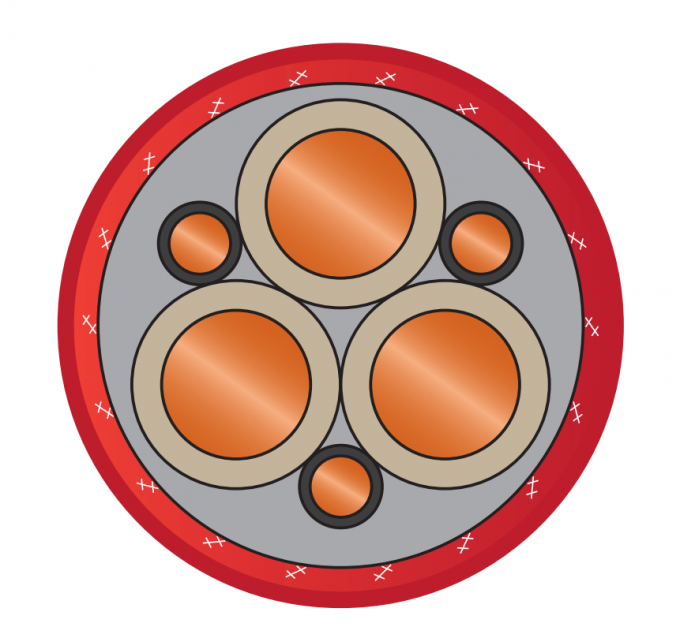

Introduction
The industrial landscape demands increasingly sophisticated power and data transmission solutions, particularly in high-speed, heavy-duty environments where reliability is paramount. The Type R-(N)TSCGEWOEU High-Speed Reeling Cable represents a significant advancement in cable engineering, specifically designed as an upgraded version of the standard (N)TSCGEWOEU stacker and reclaimer reeling cable. This enhanced solution addresses the critical needs of modern industrial operations where traditional cables fall short in performance and durability.
What sets the R-(N)TSCGEWOEU apart from its predecessor is its optimized design for high-speed reeling applications, incorporating advanced materials and construction techniques that deliver superior torsional rigidity, enhanced electric strength, and improved operational reliability. The "R" designation signifies its specialized engineering for reeling systems, making it the preferred choice for industries that require continuous, high-torque operations with minimal downtime.
This cutting-edge reeling cable targets demanding industrial environments including port operations, mining facilities, and heavy manufacturing sectors. Its robust construction and advanced fiber-optic integration capabilities make it particularly valuable in applications where both power transmission and data communication are critical for operational efficiency and safety monitoring.
Application Scenarios
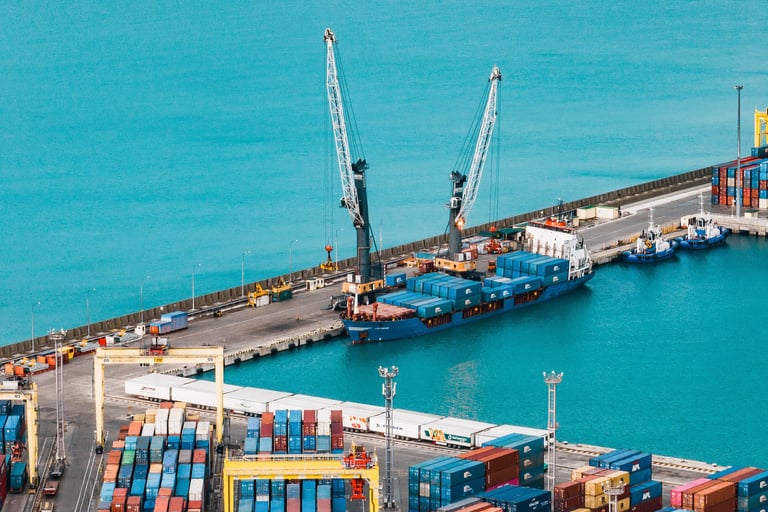



Container Cranes – High-Speed, Elevated Reel Applications
Container cranes represent one of the most demanding applications for reeling cables, operating at elevated heights with frequent high-speed movements. The R-(N)TSCGEWOEU cable excels in these environments, serving as the main power supply while withstanding the constant mechanical stress of rapid acceleration and deceleration cycles. Its enhanced torsional rigidity ensures consistent power delivery even during extreme crane movements, while the integrated fiber-optic cores enable real-time monitoring and control system communication essential for modern automated port operations.
The cable's ability to handle travel speeds up to 240 m/min makes it ideal for high-throughput container terminals where efficiency directly impacts profitability. The elevated mounting locations typical in crane applications benefit from the cable's UV-resistant properties and temperature stability, ensuring reliable operation in harsh marine environments.
Mining Equipment – Heavy-Duty, Continuous Operation
Mining operations present unique challenges with their requirement for continuous heavy-duty cycles and exposure to aggressive environmental conditions. The R-(N)TSCGEWOEU reeling cable is engineered to withstand these demanding conditions, featuring oil-resistant and flame-retardant properties essential for underground and surface mining applications.
The cable's robust EPR core elements and reinforced central construction ensure long-lasting durability even under the constant mechanical stress of mining equipment operation. Its ability to operate in temperatures ranging from -35°C to +80°C during flexing makes it suitable for mining operations in diverse climatic conditions, from arctic environments to desert regions.
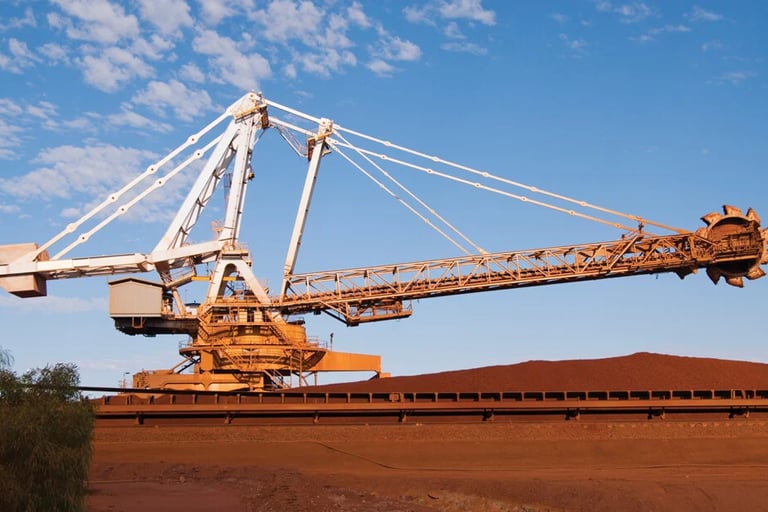


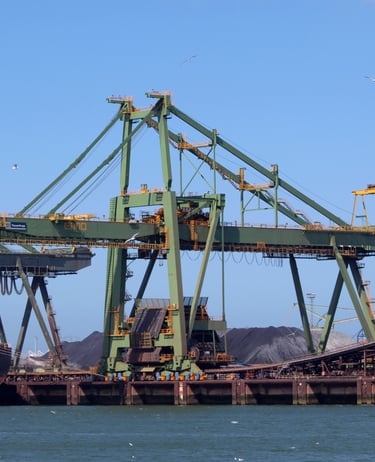
Stackers & Reclaimers – Large-Scale Industrial Power and Signal Transmission
In bulk material handling facilities, stackers and reclaimers require reliable power and data transmission over extended operational periods. The R-(N)TSCGEWOEU cable's three-layer "sandwich" design provides the perfect combination of flexibility and durability needed for these large-scale industrial operations. The integrated fiber-optic cores, available in configurations of 6, 12, 18, or more fibers, enable sophisticated monitoring and control systems that optimize material handling efficiency.
The cable's high electric strength, achieved through special insulation materials, makes it suitable for the high-voltage applications common in large-scale material handling equipment. This capability ensures consistent power delivery to the massive motors and control systems that drive modern stacker and reclaimer operations.
Ship Unloaders – Robust Reeling Support for Marine Cargo Systems
Ship unloading operations demand cables that can withstand the harsh marine environment while providing reliable power and communication links. The R-(N)TSCGEWOEU cable's polychloroprene (PCP) sheathing system offers excellent resistance to saltwater corrosion and UV degradation, making it ideal for marine applications.
The cable's fast and easy termination capability, achieved through its semiconducting and cold-strip NBR outer layer, is particularly valuable in marine environments where maintenance windows are limited and repairs must be completed quickly to minimize vessel delays.
Compatibility with Motorized Cable Reels
The R-(N)TSCGEWOEU cable is specifically engineered for use with motorized cable reels, where its excellent performance characteristics shine. The cable's minimum bending radii specifications (12 x Ø on the reel, 15 x Ø at deflection pulleys, and 20 x Ø for S-type directional changes) ensure optimal performance and longevity in automated reeling systems.
Key Features
Maximum Torsional Rigidity – Reinforced with Vulcanized Polyester Fibers
The incorporation of supporting polyester fibers vulcanized directly into the cable sheath represents a breakthrough in reeling cable design. This innovation provides maximum torsional rigidity, preventing cable twist and ensuring consistent electrical and optical performance even under high-torque conditions. The vulcanization process creates a permanent bond between the polyester fibers and the sheath material, eliminating the risk of separation that can occur with conventional reinforcement methods.
High Electric Strength – Special EPR Insulation for HV Applications
The cable's exceptional electric strength is achieved through the use of specialized ethylene propylene rubber (EPR) insulation materials applied using advanced sandwich processing techniques. This construction method ensures uniform insulation thickness and eliminates air pockets that could compromise electrical integrity. The result is a cable capable of handling voltage ratings from 6/6 kV up to 12/20 kV, with higher voltage grades available upon request.
Easy Termination – Semiconducting NBR Outer Sheath
The outer sheath construction using semiconducting and cold-strip nitrile butadiene rubber (NBR) facilitates rapid and reliable termination procedures. This design feature significantly reduces installation time and labor costs while ensuring consistent termination quality. The semiconducting properties help equalize electrical stress at termination points, enhancing long-term reliability.
Enhanced Durability – Stabilized EPR Core with Reinforced Central Elements
The cable's durability is enhanced through a stabilized stranded bond featuring EPR core elements with reinforcement in the center. This construction method distributes mechanical stress evenly across the cable cross-section, preventing premature failure of individual conductors. The central reinforcement provides additional structural integrity during bending and flexing operations.
Fiber-Optic Integration – Reliable Data Transmission with Optional Cores
The integrated fiber-optic capabilities set the R-(N)TSCGEWOEU apart from conventional power cables. Available in both mono-mode and multi-mode configurations, the fiber-optic cores enable high-speed data transmission alongside power delivery. The low attenuation specifications (2.8 dB/km at 850 nm for multi-mode, 0.4 dB/km at 1550 nm for mono-mode) ensure reliable communication over extended distances.
Three-Layer "Sandwich" Design – Combines Flexibility, Resistance, and Resilience
The innovative three-layer "sandwich" design represents a significant advancement in cable construction technology. This architecture combines multiple protective layers to achieve optimal flexibility while maintaining excellent resistance to abrasion, chemicals, and environmental factors. The extremely short lay cores within this design enhance flexibility without compromising electrical performance.
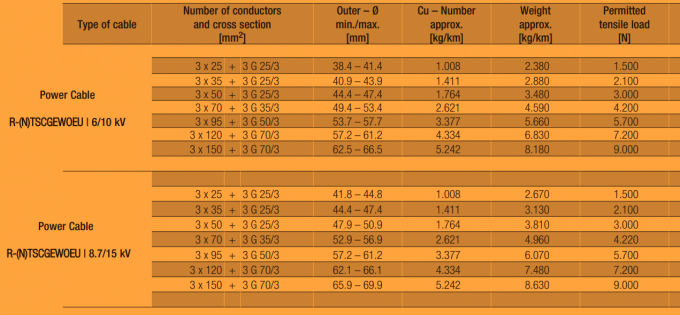


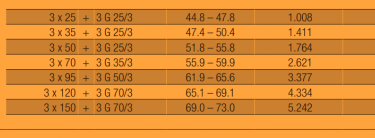
Technical Specifications
Rated Voltage Options
The R-(N)TSCGEWOEU cable accommodates a wide range of voltage requirements:
Standard Configurations: 6.0/6 kV, 8.7/15.0 kV, and 12.0/20.0 kV
Custom Solutions: Higher voltage grades available upon request to meet specific application requirements
This voltage flexibility makes the cable suitable for diverse industrial applications, from low-voltage control circuits to high-voltage power distribution systems.
Mechanical Properties
The cable's mechanical performance characteristics are optimized for demanding reeling applications:
Maximum Travel Speed: Up to 240 m/min, with higher speeds available on request
Minimum Bending Radii: Carefully engineered to prevent damage while maintaining flexibility
12 x Ø on the reel for standard winding operations
15 x Ø at deflection pulleys to accommodate direction changes
20 x Ø for S-type directional changes in complex routing scenarios
These specifications ensure optimal cable life while accommodating the mechanical demands of high-speed reeling systems.
Thermal & Chemical Resistance
The cable's environmental resistance capabilities are comprehensive:
Operating Temperature Range:
Flexing applications: -35°C to +80°C
Fixed installations: -50°C to +80°C
Chemical and Environmental Resistance:
Flame retardant for enhanced safety
CFC-free construction for environmental compliance
Oil-resistant for industrial environments
UV-resistant for outdoor applications
Limited water resistance for marine conditions
LBS-free and silicone-free for specialized applications
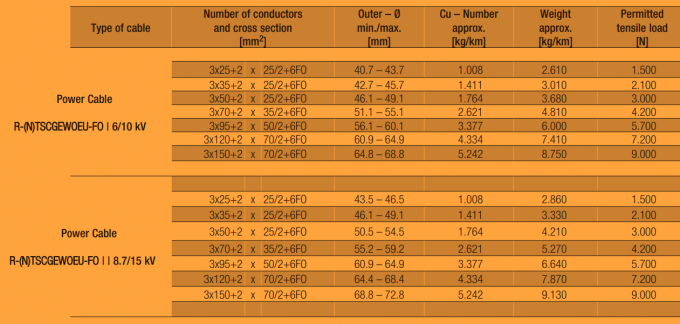


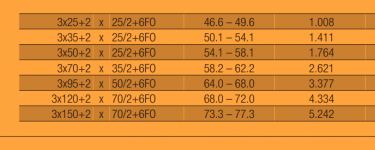
Structural Design
Conductors: Tin-Plated, Finely Stranded Copper
The cable employs highly flexible, finely stranded tin-plated electrolytic copper conductors that exceed DIN VDE 0295 category 5 specifications. The tin plating provides enhanced corrosion resistance and improved termination characteristics, while the fine stranding ensures maximum flexibility during reeling operations.
Insulation: EPR Core with Sandwich Layering
The insulation system utilizes ethylene propylene rubber (EPR) applied through an advanced sandwich process. This technique creates a homogeneous insulation layer with superior electrical properties and enhanced resistance to thermal cycling and mechanical stress.
Sheath: Dual-Layer Abrasion-Resistant PCP, Red Coded
The protective sheath system consists of dual layers of abrasion-resistant polychloroprene (PCP) compound. The bright red color coding provides easy identification and enhanced safety visibility. The dual-layer construction provides redundant protection against mechanical damage and environmental factors.
Additional Options: Mono-Mode and Multi-Mode Fiber Optics
The integrated fiber-optic options provide versatile data transmission capabilities:
Fiber Types: Both mono-mode and multi-mode configurations available
Attenuation Specifications:
850 nm: 2.8 dB/km (50/125), 3.3 dB/km (62.5/125) for multi-mode
1300 nm: 0.8 dB/km (50/125), 0.9 dB/km (62.5/125) for multi-mode
1550 nm: 0.4 dB/km (E9/125) for mono-mode
These low attenuation values ensure reliable data transmission over extended distances, making the cable suitable for large-scale industrial installations.

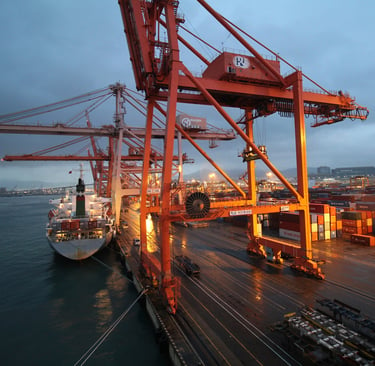
Conclusion
The Type R-(N)TSCGEWOEU High-Speed Reeling Cable represents the pinnacle of modern cable engineering, delivering superior performance advantages that directly address the challenges of contemporary industrial operations. Its combination of maximum torsional rigidity, high electric strength, and advanced fiber-optic integration capabilities makes it the optimal solution for demanding applications in ports, mining operations, and crane systems.
The cable's innovative three-layer sandwich design, coupled with its enhanced durability features and comprehensive environmental resistance, ensures reliable operation in the most challenging industrial environments. The easy termination characteristics and flexible mechanical properties reduce installation and maintenance costs while maximizing operational uptime.
For modern reeling systems that demand uncompromising performance, reliability, and longevity, the R-(N)TSCGEWOEU High-Speed Reeling Cable stands as the superior solution. Its advanced engineering and proven performance characteristics make it the preferred choice for industrial facilities seeking to optimize their power and data transmission infrastructure while minimizing total cost of ownership.
Frequently Asked Questions (FAQ)
Q: What ensures the cable's maximum torsional rigidity? A: The cable achieves maximum torsional rigidity through supporting polyester fibers that are vulcanized directly into the sheath. This permanent integration prevents cable twist and maintains consistent performance under high-torque conditions.
Q: How does the cable handle high electric strength requirements? A: The cable incorporates special EPR insulation materials applied through advanced sandwich processing techniques, providing high electric strength suitable for high-voltage applications ranging from 6/6 kV to 12/20 kV and beyond.
Q: Is termination fast and easy with this cable? A: Yes, the outer layer consists of semiconducting and cold-strip NBR, which allows for quick and easy termination while ensuring consistent quality and electrical performance.
Q: What enhances the cable's durability in demanding applications? A: The stranded bond is stabilized with EPR core elements and reinforced in the center, distributing mechanical stress evenly across the cable cross-section to ensure long-lasting durability.
Q: Can this cable support reliable data transmission alongside power delivery? A: Absolutely. The cable features integrated fiber-optic cores available in 6, 12, 18, or more fibers, supporting both mono-mode and multi-mode configurations for reliable data transmission with low attenuation characteristics.
Q: What design features contribute to its resilience and resistance? A: The cable's unique three-layer "sandwich" design combines multiple protective layers to achieve optimal resilience and resistance, utilizing very flexible, extremely short lay cores for enhanced performance in reeling applications.
How to Reach Us
Get in Touch
SiteMap
Product Catalogue
Reeling Cable
Festoon Cable
Shore Power Cable




Scan to add us on WeChat
